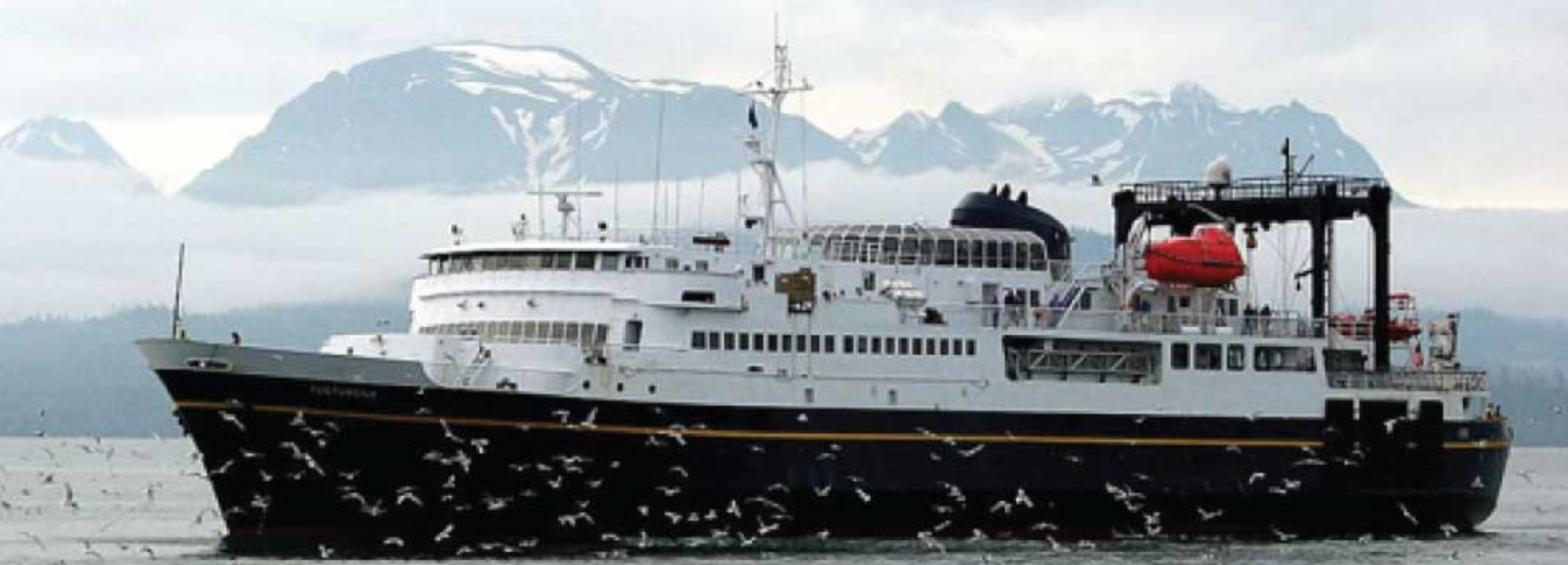Moving Alaska’s seafood to end markets around the globe and shipping supplies to support the industry’s seaports have never been easy feats, but both became even more difficult due to logistical problems affecting the industry during the pandemic.
Though transportation systems associated with seafood remained bottlenecked - much of it due to labor shortages - for much of 2021 and 2022, the hope is that increasing volumes of product will move and support services will improve in 2023.
Coastal communities served by Alaska’s state ferry system, however, may see a continued shortage of service as the state recovers from budget crunches, deferred maintenance and an aging fleet of vessels that could take years to upgrade.
In 2019, the Alaska Marine Highway System, which operates the ferries, saw a $43 million cut in funding. That came as a hard blow to an annual budget that has hovered around $140 million through the years. The ensuing shutdown came immediately and left travelers stranded in some ports, but the lasting effect has been the lack of support for 33 fishing towns stretching from Southeast to the Aleutian Islands and Dutch Harbor.
Though many of Alaska’s fishing towns have since found alternative methods of moving fish via barge service provided by Alaska Marine Lines, Alaska Airlines (freight) and other fresh or frozen fish transporters, the peripheral services of the ferries have been sorely missed.
In the past, Cordova fishermen loaded trucks laden with nets and other supplies for the upcoming seasons onto the ferry in Homer or Whittier. Many of them also loaded camping trailers in which to house their families at an RV park in Cordova. After the fishing season they loaded all of their belongings into their trucks and trailers, drove those onto the ferry and disembarked in Whittier, where the road connects with the rest of the United States.
“It’s a super crucial lifeline for the seafood industry here,” says Christa Hoover, executive director of the Copper River Prince William Sound Marketing Association.
In September, lawmakers and the Alaska Department of Transportation unveiled a plan, “Reimagining AMHS” to renovate the system. Using federal funding that could tally up to $1 billion as part of a five-year program to upgrade the nation’s rural ferry systems, the proposed revamping of Alaska’s ferry system calls for three phases that include solidifying a budget, building morale within the crews and providing sustainable service across Alaska.
Among the more immediate improvements, funding has been appropriated for the construction of a new ferry to replace the aging Tustamena, which sails a route that covers some of Prince William Sound, Kodiak and ports along the Alaska Peninsula and Dutch Harbor.
The new ferry is estimated to cost around $238 million and will offer 40 percent more capacity than the 59-year-old Tustamena. Unfortunately, that ferry won’t sail before 2027.
Meanwhile, $8 million in the state’s budget has been set aside to maintain the Tustamena with another $4.4 million dedicated for adding side cargo doors to the Tazlina and the Hubbard, two new vessels that were completed for $120 million in 2021.
The 296-foot Tustamena was built in 1964 and lengthened in 1969 with a prefabricated 54-foot mid-section. With capacity for 160 passengers the vessel also has 680 linear feet of room on its vehicle deck, equivalent to about 34 vehicles of 20-foot length.
The Tazlina and the Hubbard were built without berthing for their crews, are limited in range, and had been scheduled to operate as day boats between Haines and Juneau. They had been built as part of a project that would extend the existing road out of Juneau another 50 miles and shorten sailing times to Haines. The state scuttled the road project as part of the budget crunch, and until recently, the two new ferries remained tied to the dock. The latest plan calls for the installation of berthing in the Hubbard at a price tag of $16 million.
Meanwhile, AMHS announced short-term plans within its winter sailing schedule in hopes of filling some gaps. In September, the transportation department announced that it will be substituting the vessels Matanuska and the Kennicott to cover routes that had been initially served by the Aurora and the Columbia, which will undergo overhauls and other maintenance.
“We adjusted the winter schedule based upon the feedback we received and will keep on working with Alaska’s coastal communities to minimize service disruptions,” states Ryan Anderson in a press release put out by the Alaska Dept. of Transportation.







